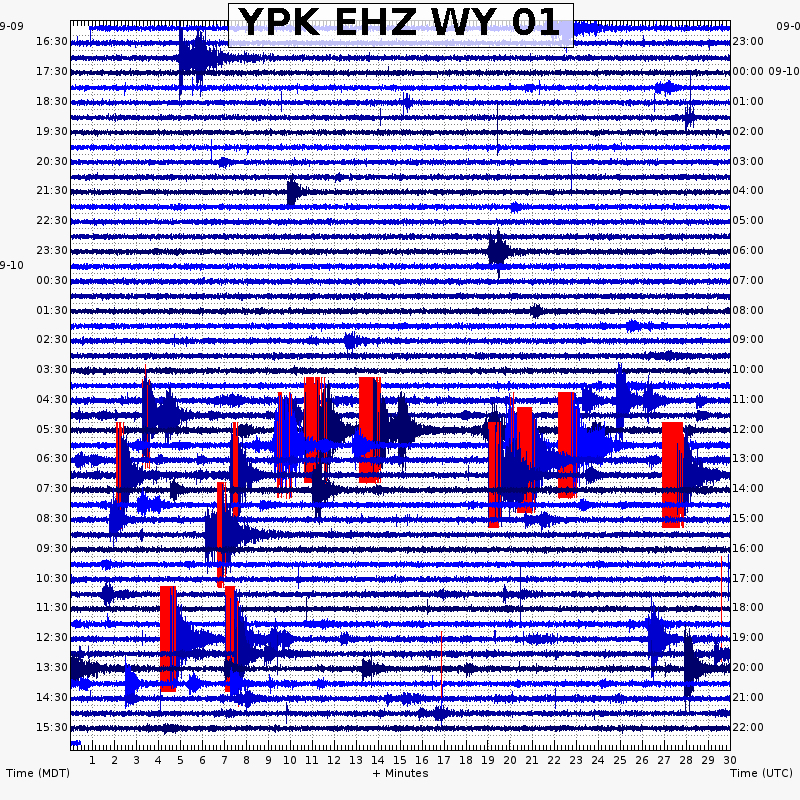AI Study Reveals Dramatic Increase in Yellowstone Seismic Activity

A groundbreaking study conducted by researchers at Western University, Canada, has unveiled a significant increase in seismic activity within the Yellowstone Caldera, identifying a staggering 86,276 seismic events from 2008 to 2022. This represents a tenfold increase in recorded earthquakes, primarily attributed to advancements in machine learning techniques applied to historical earthquake data. The research, published in the prestigious journal Science Advances, highlights critical insights into the seismic behavior of this geologically active region.
The Yellowstone Caldera, located across Wyoming, Idaho, and Montana, is one of the world’s most seismically active volcanic areas. Historically, the assessment of its seismic activity relied on manual inspections of earthquake data, a method fraught with limitations. According to Professor Bing Li, a leading researcher on the study, the previous approach was slow, costly, and often overlooked numerous smaller seismic events. The integration of machine learning has revolutionized this process, allowing for comprehensive analysis of extensive seismic databases.
This enhanced study found that more than half of the identified seismic events occurred in swarms—clusters of small earthquakes that develop and evolve over short time frames within confined areas. "These swarms differ fundamentally from aftershocks, which are sequential smaller events following a major earthquake," explained Professor Li. Such insights are crucial as they enhance our understanding of the complex dynamics beneath the Yellowstone Caldera, offering potential pathways for risk assessment and public safety communication.
The research team, which included collaboration from Universidad Industrial de Santander in Colombia and the United States Geological Survey, employed advanced statistical methods to analyze the newly expanded seismic catalogue. Professor Li noted that this systematic review not only provides a clearer picture of volcanic and seismic activity but also identifies previously undetected swarms of earthquakes, thereby deepening the understanding of the region’s geological processes.
In addition to revealing the extent of seismic activity, the study draws attention to the unique characteristics of the fault structures beneath Yellowstone. The researchers found that these swarms occur along relatively young, rough fault lines, contrasting with the smoother faults observed in seismically stable regions such as Southern California. This distinction is significant as it informs scientists about the unique seismic behavior of Yellowstone, which could influence both volcanic risk assessments and geothermal energy exploration.
As global interest in geothermal energy grows, understanding the seismic landscape of Yellowstone becomes increasingly vital. The advanced insights from this study not only improve safety protocols but also guide energy development by avoiding areas with high geothermal heat flow that may pose risks.
The implications of this research extend beyond local safety and energy development; they resonate within the broader scientific community focused on seismic research. The application of machine learning techniques in identifying seismic patterns could serve as a model for analyzing other historically seismic regions worldwide. As Professor Li concluded, the ability to process and interpret vast amounts of data more effectively positions researchers to enhance both public awareness and scientific understanding of volcanic and earthquake activity globally.
In conclusion, this study not only marks a significant advancement in seismic research but also underscores the potential of machine learning in transforming how scientists analyze and interpret geological data. As the Yellowstone Caldera continues to be a focal point for volcanic activity, ongoing research will remain essential in ensuring public safety and advancing scientific knowledge in this critical field.
Advertisement
Tags
Advertisement





